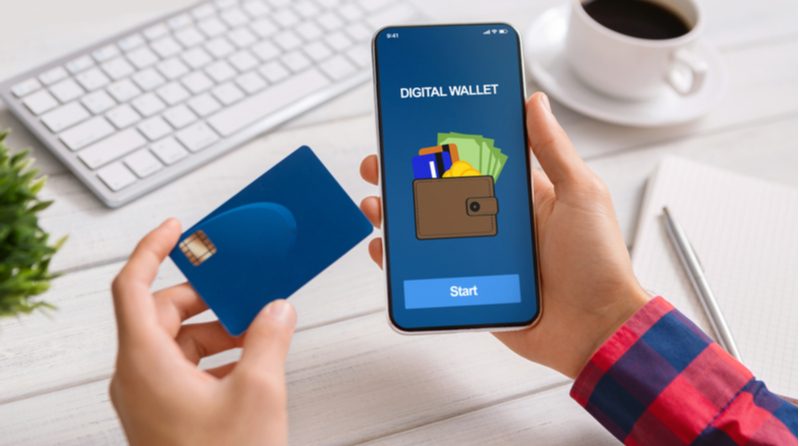Blog | Will Ireland be cashless by 2025? Here’s what SMEs need to know
‘Card only’ and ‘cash free’ signs are an increasingly common sight at the tills of Irish retailers, especially since the pandemic. For many businesses, however, cash still reigns.
Where do Irish consumers stand on the matter? According to the .IE Tipping Point report 2022, nearly two-thirds (62%) said they were using cash ‘significantly’ or ‘slightly’ less often since the pandemic. 16% do not use cash for any purchases, while 41% said they used it only for purchases under €10. Less than a quarter (22%) used cash for purchases above €50.

But despite increasing consumer preference for cashless transactions, the .IE Tipping Point report showed that as many as a quarter of Irish retailers and consumer-facing professional services SMEs still only accept cash. This figure rises to 35% for businesses with 1-5 employees and 38% for businesses with a premises in Dublin.
While these businesses have clearly been able to manage without card and contactless payments, the long-term trend suggests this can’t last forever. Research by BOI Payment Acceptance in 2020 showed that more than half (54%) of Irish consumers either already considered themselves cashless or believed that they would be by 2025. Furthermore, just under half (49%) said some or all notes and coins should be phased out of circulation by 2030.
What are the advantages and disadvantages of cashlessness?
Most consumers consider non-cash payments, particularly contactless card and device payments, quicker and more convenient than using cash.
For businesses, customer transactions are faster, and less time is required to administer the till or train staff how to use it. A cashless business is also less susceptible to theft.
However, cashlessness isn’t without its disadvantages, and one of its biggest is its potential for social isolation. Historically, cashlessness has disproportionately affected older age groups, particularly the elderly, who are less likely to have the skills required to use digital payments.

Cashless payments also come with costs. Payment providers take a small percentage (typically 1-4%) from each transaction, and for businesses with very tight margins, these fees often aren’t worth it.
Three questions to consider before going cashless
Modern point-of-sale (POS) terminals that facilitate card and contactless payments are portable, affordable, and easy to use, providing speed and flexibility for businesses and consumers alike.
However, before transitioning to a cashless or near-cashless business model, business owners should consider a few important points.
1. Who are your customers?
Put yourself in your customer’s shoes. If you serve an older market, perhaps in a rural part of the country, going fully cashless over a short period is unlikely to be to your benefit. Your customers may not have the desire or ability to transact without cash.
Still, remember that overall cash usage is trending downwards; ATM withdrawals fell from €19.9bn in 2018 to €12.7bn in 2021. Furthermore, while older people remain the least likely to use non-cash payments, the .IE Tipping Point report 2022 suggests change is underway: since the pandemic, two-thirds of ‘Baby Boomers’ (born 1946-1964) say they are using cash less often, more than any other age group.
If your business typically serves or is targeting younger customers, or you are located in an urban area where there is likely to be greater exposure to new technologies and trends, going cashless may be a sound business move—indeed, your customers may expect it.
2. Where are you?
Modern POS devices use WiFi or mobile internet to record and execute transactions, which is an issue for businesses with unreliable connectivity. We know from previous .IE research that lack of adequate internet connectivity has been a major barrier to digital activity.
Fortunately, many POS terminals have an ‘offline’ mode, which allows a business to continue accepting card and contactless payments even when the internet is unreliable, ensuring customer convenience. In offline mode, the terminal keeps a store of transactions on the device and processes them when it can re-connect to the internet.
Business owners should note that this means failed transactions may not be noticed until hours after the customer has been and gone—in which case, it may be impossible to recover the loss.
3. How are your digital skills?
While transitioning away from cash can rid your business of many of the stresses and risks of keeping, securing, and transporting notes and coins, digital businesses are still vulnerable to cyberattack.
Bank accounts, digital wallets, and even physical POS terminals are regular targets for hackers and other opportunistic criminals. Despite this, most cybersecurity incidents can be avoided with basic knowledge of ‘security hygiene’.
Ensure that you and your staff are willing and able to update your passwords, antivirus software and POS software as frequently as possible. It’s also important that you know how to spot potential email scams, which may harbour dangerous ransomware, and other social engineering scams, such as phishing.

Check out out blog Seven simple cybersecurity tips to keep your business safe online for some tips and advice.
Wrapping up
Before ditching notes and coins completely, SMEs must judge their individual market, infrastructure, and skills and expertise.
While Ireland may not have a formal policy mandating cashlessness by 2025, the .IE Tipping Point report shows that consumers increasingly favour the convenience and speed of digital payments over notes and coins. Businesses that don’t provide them risk being left behind.
For more insights, visit our .IE Tipping Point page where you can download the full report.
Oonagh McCutcheon is our Corporate Communications Manager and National Director of our .IE Digital Town Programme.